Search Result
Results for "
anti-apoptotic
" in MedChemExpress (MCE) Product Catalog:
1
Biochemical Assay Reagents
2
Isotope-Labeled Compounds
| Cat. No. |
Product Name |
Target |
Research Areas |
Chemical Structure |
-
- HY-N6076
-
|
|
ERK
|
Neurological Disease
|
|
Tenuifoliside A is isolated from Polygala tenuifolia, has anti-apoptotic and antidepressant-like effects. Tenuifoliside A exhibits its neneurotrophic effects and promotes cell proliferation through the ERK/CREB/BDNF signal pathway in C6 cells .
|
-

-
- HY-134616
-
|
Uristatin
|
Ser/Thr Protease
Apoptosis
|
Neurological Disease
Inflammation/Immunology
|
|
Ulinastatin (Uristatin) is a trypsin and serine protease inhibitor. Ulinastatin is the main protein binding inhibitor of various trypsin, chymotrypsin, and various pancreatic proteases. Ulinastatin shows neuroprotective, anti-inflammatory, anti-apoptotic, anti-oxidant effects .
|
-

-
- HY-160108
-
|
|
Bcl-2 Family
|
Others
|
|
Bcl-2-IN-17 is a Bcl2 inhibitor and can be used for the research of diseases associated with Bcl anti-apoptotic protein .
|
-
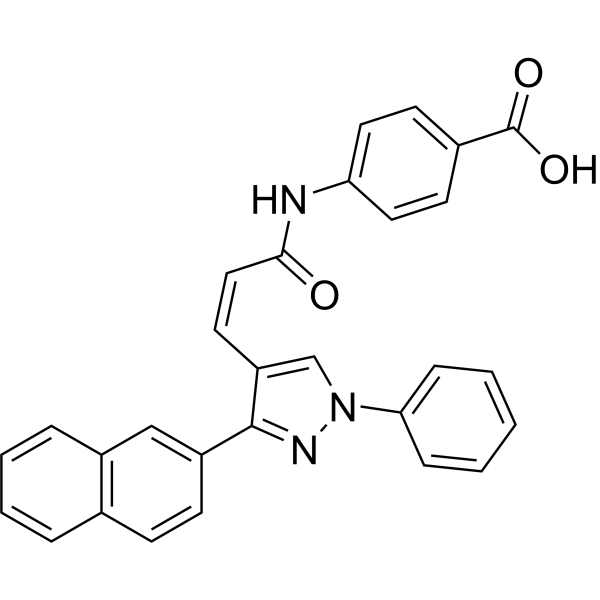
-
- HY-103272
-
|
|
Apoptosis
Bacterial
|
Others
|
|
iMAC2 is a potent MAC inhibitor with an IC50 of 28 nM and an LD50 of 15000 nM. iMAC2 shows anti-apoptotic effect. iMAC2 blocks cytochrome c release .
|
-

-
- HY-110073
-
|
|
Apoptosis
|
Inflammation/Immunology
Cancer
|
|
iMAC2 hydrochloride is a potent MAC (mitochondrial apoptosis-induced channel) inhibitor, with an IC50 of 28 nM and a LD50 of 15000 nM. iMAC2 hydrochloride shows anti-apoptotic effect. iMAC2 hydrochloride blocks cytochrome c release .
|
-

-
- HY-P3993
-
|
14-Glycine-Humanin (human)
|
Apoptosis
|
Neurological Disease
|
|
(Gly14)-Humanin (human) (14-Glycine-Humanin (human)) is an analog of Humanin in which the 14th amino acid serine was replaced with glycine (Gly). (Gly14)-Humanin (human) has anti-apoptotic and neuroprotective functions .
|
-

-
- HY-P3993A
-
|
14-Glycine-Humanin (human) (acetate)
|
Apoptosis
|
Neurological Disease
|
|
(Gly14)-Humanin (human) (14-Glycine-Humanin (human)) acetate is an analog of Humanin in which the 14th amino acid serine was replaced with glycine (Gly). (Gly14)-Humanin (human) acetate has anti-apoptotic and neuroprotective functions .
|
-
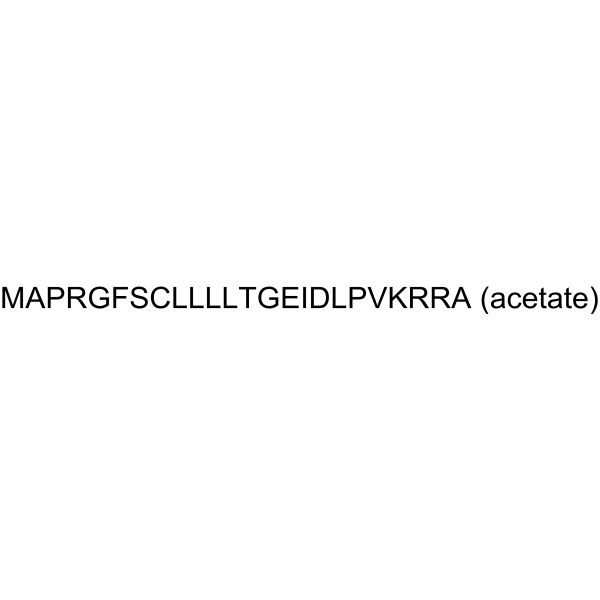
-
- HY-N6959
-
|
|
Reactive Oxygen Species
Apoptosis
|
Metabolic Disease
|
|
Osmundacetone is a natural product isolated from Osmundae Rhizoma, with neuroprotective and anti-apoptotic effects. Osmundacetone also has DPPH scavenging activity and anti-oxidative stress activity. Osmundacetone inhibits MAPK phosphorylation, including JNK, ERK, and p38 kinase. Osmundacetone can be a potential agent for the research of neurodegenerative diseases .
|
-
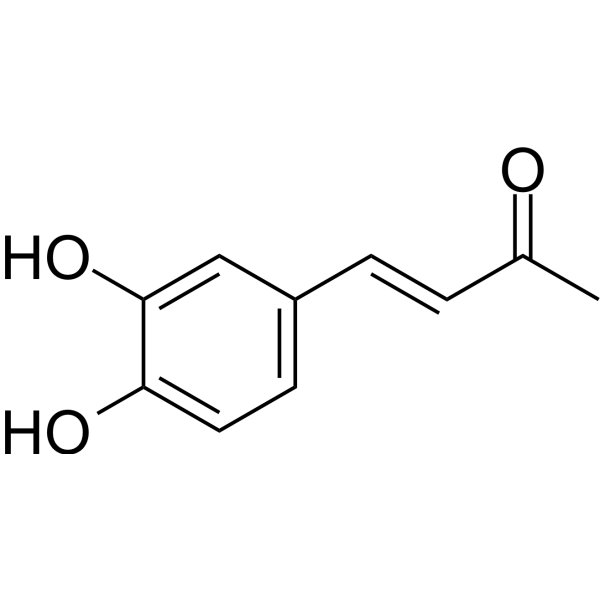
-
- HY-N4005
-
|
|
Bacterial
Tyrosinase
|
Infection
Neurological Disease
|
|
Isoastilbin is a dihydroflavonol glycoside compound in Rhizoma Smilacis glabrae and Astragalus membranaceus. Isoastilbin inhibits glucosyltransferase (GTase) with an IC50 value of 54.3 μg/mL, and also inhibits tyrosinase activity. Isoastilbin shows neuroprotective, antioxidation, antimicrobial and anti-apoptotic properties and has the potential for Alzheimer’s disease research .
|
-
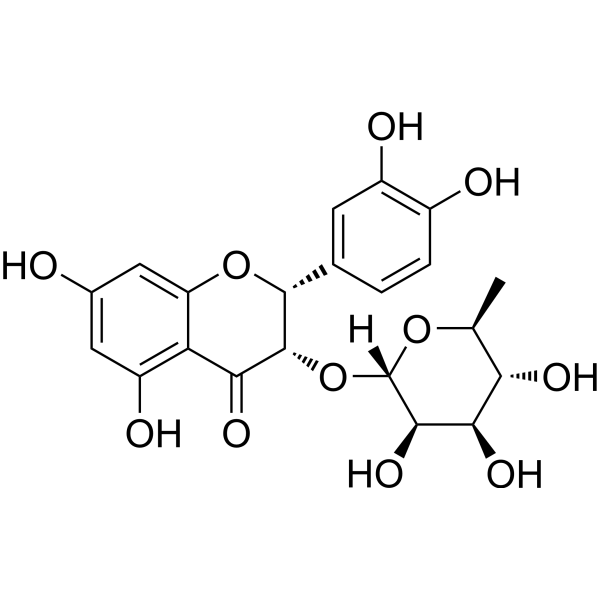
-
- HY-N1778
-
|
O-Methylferulic acid
|
Reactive Oxygen Species
Virus Protease
|
Infection
Cancer
|
|
3,4-Dimethoxycinnamic acid (O-Methylferulic acid) is a monomer extracted and purified from Securidaca inappendiculata Hassk. 3,4-Dimethoxycinnamic acid exerts anti-apoptotic effects on L-02 cells via the ROS-mediated signaling pathway . Anti-apoptotic effects .
|
-
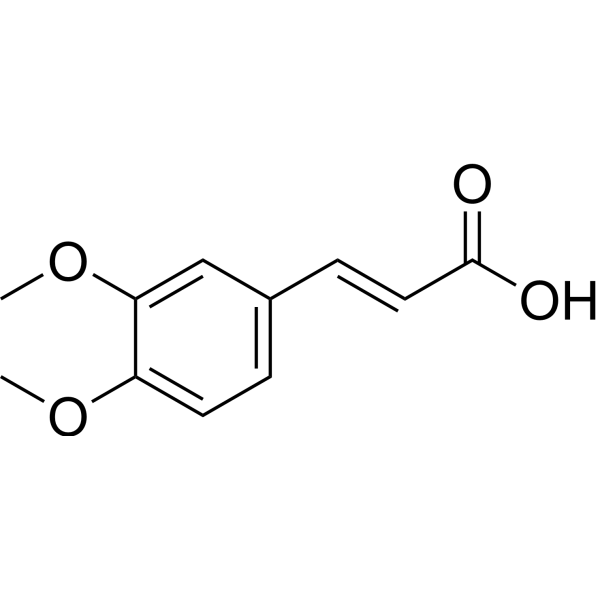
-
- HY-N1778A
-
|
(E)-O-Methylferulic acid
|
Reactive Oxygen Species
Virus Protease
|
Infection
Cancer
|
|
(E)-3,4-Dimethoxycinnamic acid is the less active isomer of 3,4-Dimethoxycinnamic acid. 3,4-Dimethoxycinnamic acid exerts anti-apoptotic effects on L-02 cells via the ROS-mediated signaling pathway . Anti-apoptotic effects .
|
-
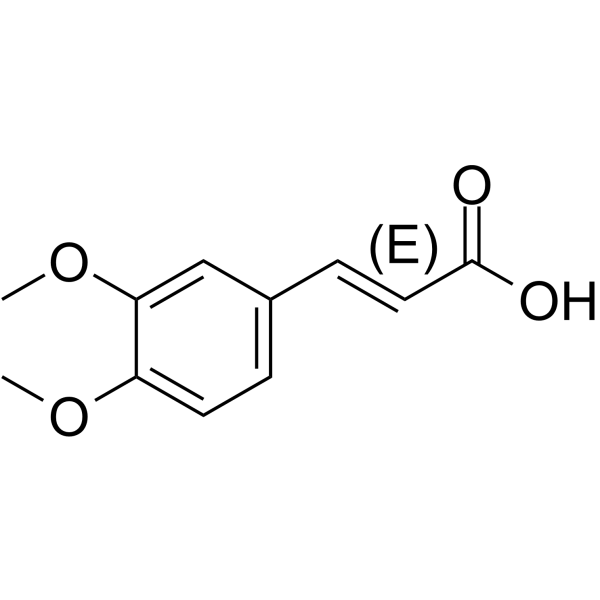
-
- HY-N0783
-
-
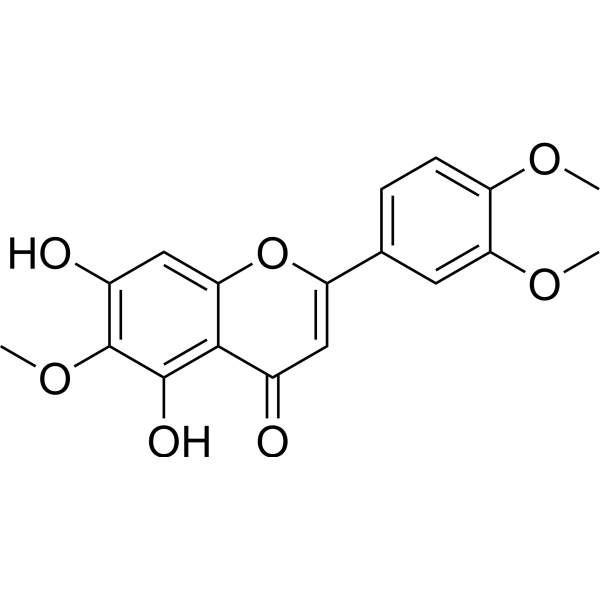
-
- HY-N3204
-
|
|
Apoptosis
|
Neurological Disease
|
|
Neoechinulin A is an isoprenyl indole alkaloid that exhibits scavenging, neurotrophic factor-like, and anti-apoptotic activities. Neoechinulin A induces memory improvements and antidepressant-like effects in mice .
|
-

-
- HY-N0403
-
|
|
Apoptosis
|
Inflammation/Immunology
|
|
2,3,4',5-Tetrahydroxystilbene 2-O-β-D-glucoside (TSG) is an active product that can be extracted from Polygonum multiflorum Thunb. TSG has anti-inflammatory, antioxidative, anti-atherosclerotic, anti-apoptotic, and free radical scavenging activities, TSG is also indicated to facilitate long-term potentiation and learning and memory in both normal and pathological conditions .
|
-
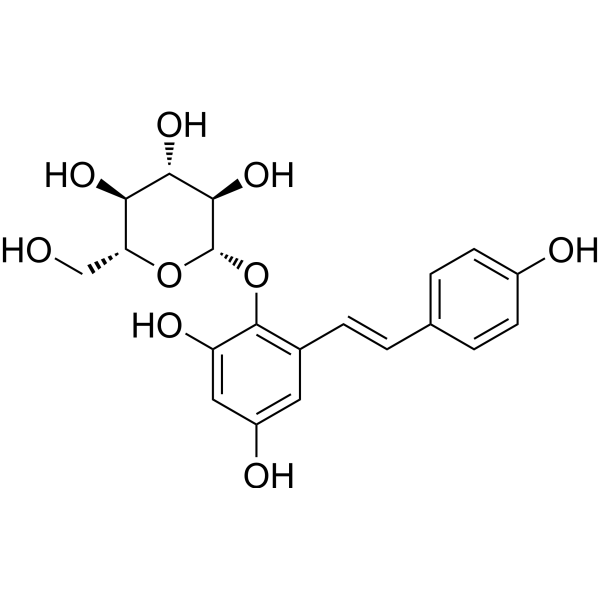
-
- HY-B0612
-
|
|
Calcium Channel
Apoptosis
Reactive Oxygen Species
p38 MAPK
NF-κB
|
Cardiovascular Disease
Neurological Disease
|
|
Lercanidipine is a third-generation, lipophilic, brain-penetrant, vascular-selective and orally active dihydropyridine-calcium channel blocker with a pIC50 of 7.74 (converts from μM). Lercanidipine has long lasting antihypertensive action as well as reno- and neuro-protective effect. Lercanidipine also shows anti-oxidant, anti-inflammatory and anti-apoptotic properties. Lercanidipine can be used in cardiovascular and neurological research .
|
-
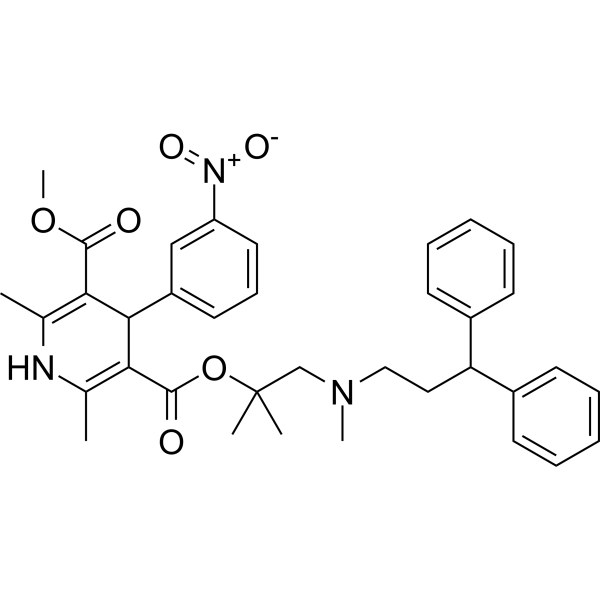
-
- HY-B0612A
-
|
|
Calcium Channel
Apoptosis
Reactive Oxygen Species
p38 MAPK
NF-κB
|
Cardiovascular Disease
Neurological Disease
|
|
Lercanidipine is a third-generation, lipophilic, brain-penetrant, vascular-selective and orally active dihydropyridine-calcium channel blocker with a pIC50 of 7.74 (converts from μM). Lercanidipine has long lasting antihypertensive action as well as reno- and neuro-protective effect. Lercanidipine also shows anti-oxidant, anti-inflammatory and anti-apoptotic properties. Lercanidipine can be used in cardiovascular and neurological research .
|
-
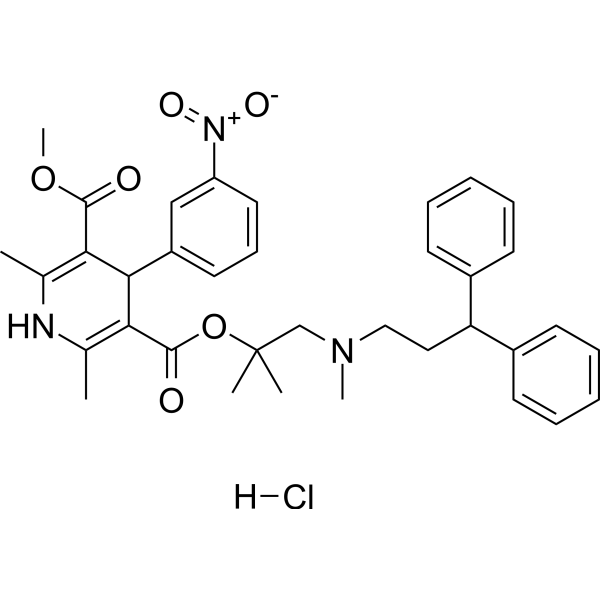
-
- HY-P2804
-
|
GADPH; G3PDH; Glyceraldehyde phosphate dehydrogenase
|
Others
|
Others
|
|
Glyceraldehyde phosphate dehydrogenase (EC 1.2.1.12) is the target of anti-thymocyte and anti-apoptotic agents. Glyceraldehyde phosphate dehydrogenase catalyzes the chain oxidation of reduced nicotinamide adenine dinucleotide by perhydroxyl radicals .
|
-
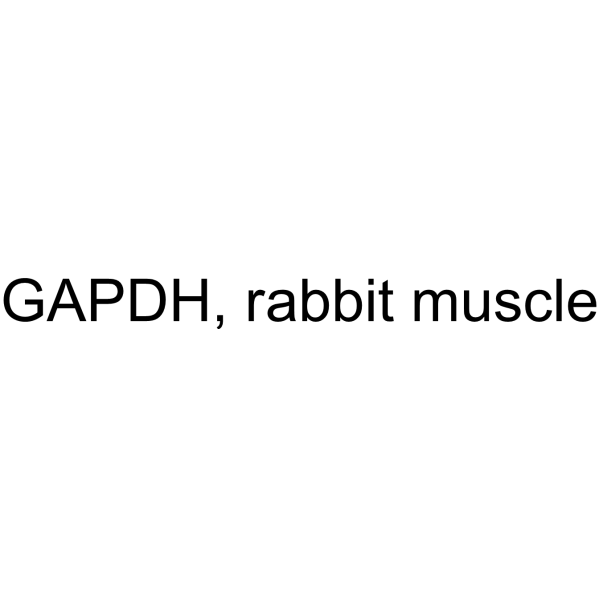
-
- HY-N6850
-
|
|
HSP
Endogenous Metabolite
|
|
|
Calenduloside E (CE) is a natural pentacyclic triterpenoid saponin extracted from Aralia elata. Calenduloside E (CE) has anti-apoptotic potent by targeting heat shock protein 90 (Hsp90) .
|
-

-
- HY-N6077
-
|
|
Others
|
Cancer
|
|
Thalidezine is a novel activator of AMP-activated protein kinase (AMPK). Thalidezine can eliminate anti-apoptotic cancer cells through energy-mediated autophagy death. Thalidezine can be used to study apoptosis intervention .
|
-
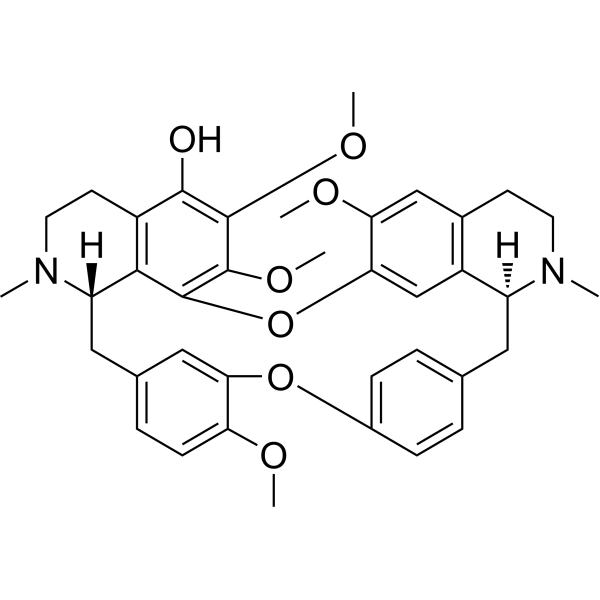
-
- HY-161254
-
|
|
Apoptosis
MDM-2/p53
|
Inflammation/Immunology
|
|
ATPase-IN-3 (compound 6) is a ATPase inhibitor. ATPase-IN-3 has Gastroprotective effect in ethanol-induced gastric ulcers by contribution of anti-apoptotic (BCL-2) and tumor suppressor (P53) proteins .
|
-
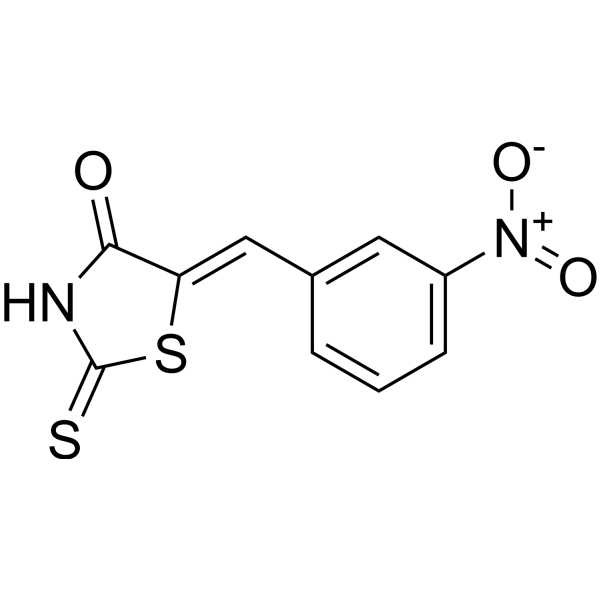
-
- HY-N0783R
-
|
|
PPAR
Autophagy
|
Neurological Disease
Inflammation/Immunology
Cancer
|
|
Eupatilin (Standard) is the analytical standard of Eupatilin. This product is intended for research and analytical applications. Eupatilin, a lipophilic flavonoid isolated from Artemisia argyi Lévl. et Van., is a PPARα agonist, and possesses anti-apoptotic, anti-oxidative and anti-inflammatory activities.
|
-
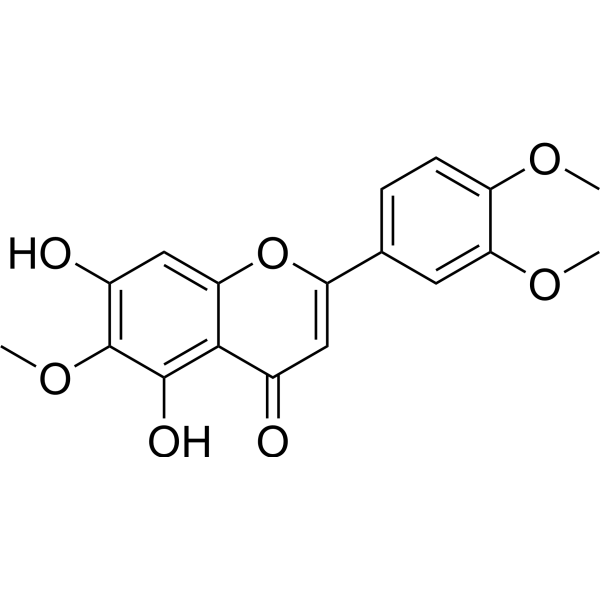
-
- HY-N2037
-
|
Norcoclaurine; Demethyl-Coclaurine
|
|
|
|
Higenamine (Norcoclaurine), a β2-AR agonist, is a key component of the Chinese herb aconite root that prescribes for treating symptoms of heart failure in the oriental Asian countries. Higenamine (Norcoclaurine) has anti-apoptotic effects .
|
-
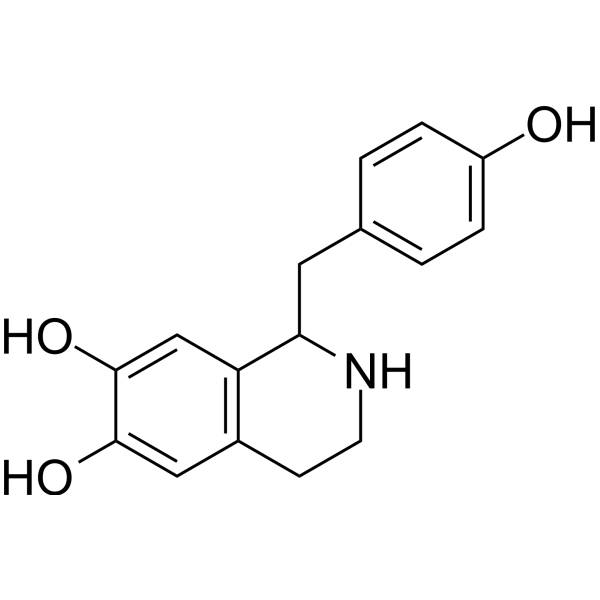
-
- HY-10087
-
Navitoclax
Maximum Cited Publications
73 Publications Verification
ABT-263
|
Bcl-2 Family
|
Cancer
|
|
Navitoclax (ABT-263) is a potent and orally active Bcl-2 family protein inhibitor that binds to multiple anti-apoptotic Bcl-2 family proteins, such as Bcl-xL, Bcl-2 and Bcl-w, with a Ki of less than 1 nM .
|
-

-
- HY-149017
-
|
|
Apoptosis
|
Cancer
|
|
Apoptosis inducer 7 (Compound 5I) induces apoptosis in cancer cells. Apoptosis inducer 7 inducrs cleavage of PARP, caspases, down-regulation of anti-apoptotic protein c-Flip and up regulation of pro-apoptotic protein Noxa. Apoptosis inducer 7 exhibits antitumor activity .
|
-

-
- HY-N2638
-
|
|
Apoptosis
|
Cardiovascular Disease
|
|
Ilexsaponin A, isolated from the root of Ilex pubescens, attenuates ischemia-reperfusion-induced myocardial injury through anti-apoptotic pathway. Ilexsaponin A can reduce myocardial infarct size, lower the serum levels of LDH, AST and CK-MB, increase cellular viability and inhibit apoptosis in hypoxia/reoxygenation cardiomyocytes .
|
-

-
- HY-152193
-
|
|
Others
|
Cancer
|
|
ChoKα inhibitor-4 is a bioisosteric inhibitor of HChoK α1 (IC50=0.66 μM), with inhibitory and antiproliferative effect on cancer cells. ChoKα inhibitor-4 induces apoptosis via mitochondrial pathway, and reduces anti-apoptotic proteins expression .
|
-
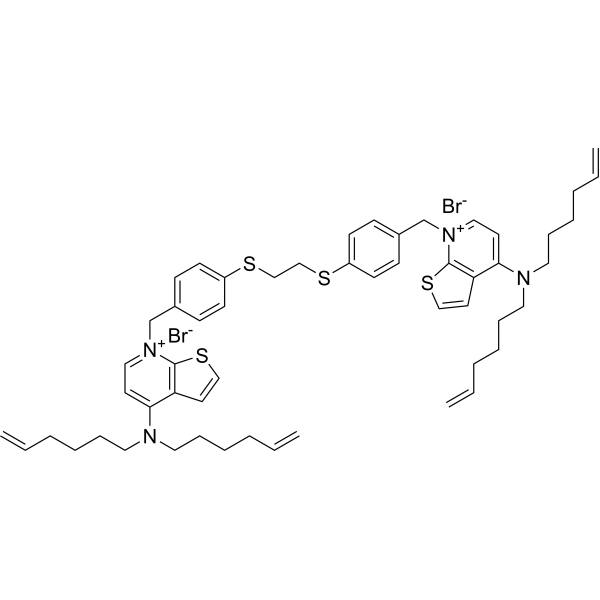
-
- HY-N1485
-
|
Astramembrangenin; Cyclosieversigenin
|
|
|
|
Cycloastragenol (Astramembrangenin), the active form of astragaloside IV, has anti-oxidant, anti-inflammatory, anti-aging, anti-apoptotic, and cardiovascular protective effects. Cycloastragenol is a potent telomerase activator and can lengthen telomeres. Cycloastragenol alleviates age-related bone loss and improves bone microstructure and biomechanical properties .
|
-

-
- HY-P2343
-
|
|
Apoptosis
|
Cancer
|
|
BH3 hydrochloride, a BBB penetrated peptide, provoke apoptosis either by direct activation of pro-apoptotic Bax/Bak or by neutralizing anti-apoptotic Bcl-2 proteins (Bcl-2, Bcl-XL, Bcl-w, Mcl-1 and A-1) via their BH3 domian .
|
-

-
- HY-10930
-
UNC0321
2 Publications Verification
|
Histone Methyltransferase
GCGR
Apoptosis
|
Cancer
|
|
UNC0321 is a potent and selective histone methyltransferase G9a inhibitor with a Ki of 63 pM and with assay-dependent IC50 values of 6-9 nM. UNC0321 also inhibits GLP with assay-dependent IC50 values of 15-23 nM. UNC0321 has anti-apoptotic activity and has potential application in diabetic vascular complications .
|
-
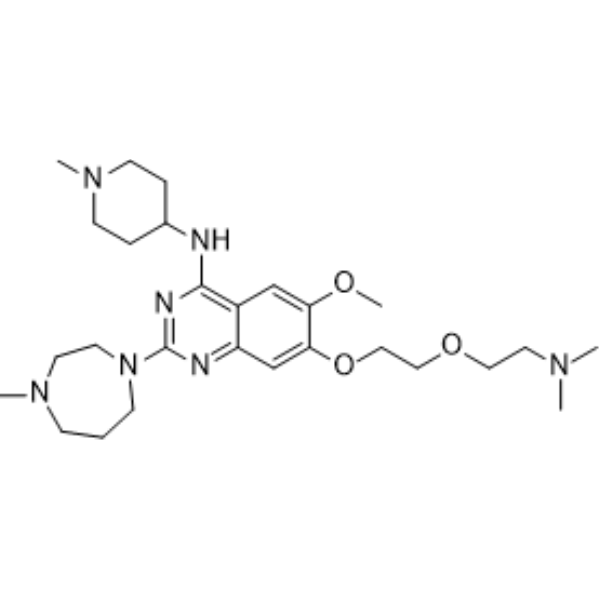
-
- HY-10087S
-
|
|
Bcl-2 Family
|
Cancer
|
|
Navitoclax-d8 is the deuterium labeled Navitoclax. Navitoclax (ABT-263) is a potent and orally active Bcl-2 family protein inhibitor that binds to multiple anti-apoptotic Bcl-2 family proteins, such as Bcl-xL, Bcl-2 and Bcl-w, with a Ki of less than 1 nM[1].
|
-
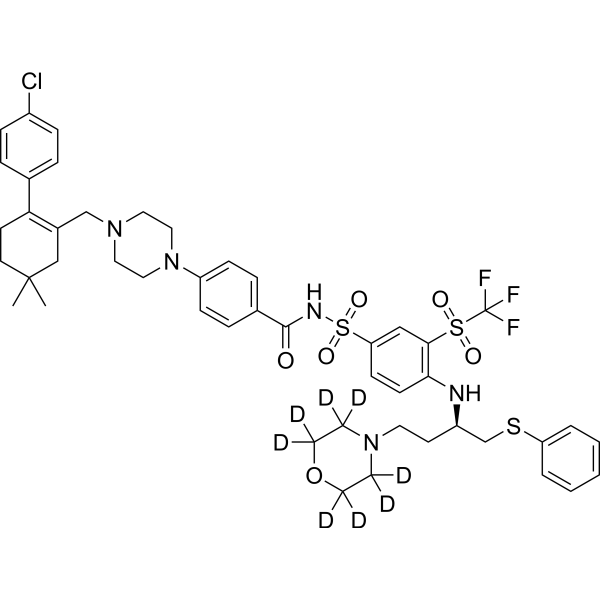
-
- HY-155612
-
|
|
Caspase
|
Neurological Disease
|
|
M826 is a potent, selective and reversible non-peptide caspase-3 inhibitor with an IC50 value of 0.005 μM for enzymatic activity against caspase-3. M826 displays potent anti-apoptotic activity in animal models in vitro and in vivo. M826 can be used for nervous system diseases research .
|
-
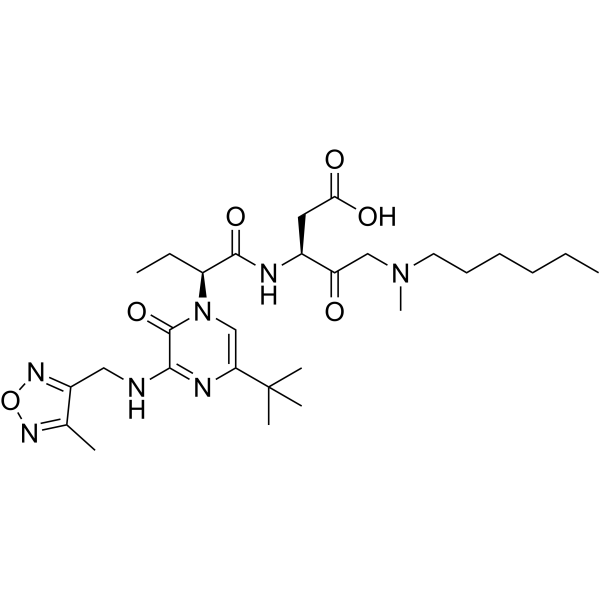
-
- HY-18628
-
UMI-77
1 Publications Verification
|
Bcl-2 Family
|
Cancer
|
|
UMI-77 is a selective Mcl-1 inhibitor, which shows high binding affinity to Mcl-1 (IC50=0.31 μM). UMI-77 binds to the BH3 binding groove of Mcl-1 with Ki of 490 nM, showing selectivity over other members of anti-apoptotic Bcl-2 members.
|
-

-
- HY-118119
-
|
|
PGE synthase
|
Cancer
|
|
CAY10526 is a specific microsomal PGE2 synthase-1 (mPGES1) inhibitor. CAY10526 inhibits PGE2 production through the selective modulation of mPGES1 expression but does not affect COX-2. CAY10526 significantly suppresses tumor growth and increases apoptosis in melanoma xenografts. CAY10526 reduces BCL-2 and BCL-XL (anti-apoptotic) protein levels and increases BAX and BAK (pro-apoptotic) as well as cleaved caspase 3 levels. CAY10526 inhibits cell viability (IC50<5 μM) in three melanoma cell lines expressing mPGES1 .
|
-
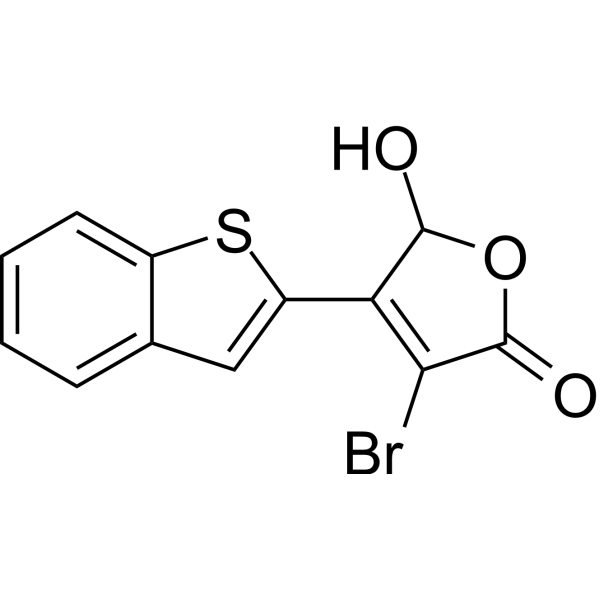
-
- HY-N6967
-
|
(-)-α-Bisabolol
|
Apoptosis
|
Neurological Disease
Inflammation/Immunology
|
|
Levomenol ((-)-α-Bisabolol), a monocyclic sesquiterpene alcohol, exerts antioxidant, anti-inflammatory, and anti-apoptotic activities. Levomenol also has neuroprotective effects and prevents neuronal damage and memory deficits through reduction of proinflammatory markers induced by permanent focal cerebral ischemia in mice. Levomenol attenuates nociceptive behaviour and central sensitisation in a rodent model of trigeminal neuropathic pain. Orally active .
|
-

-
- HY-146097
-
|
|
P-glycoprotein
Apoptosis
|
Cancer
|
|
RMS5, a tetrandrine analogue, is a potent P-glycoprotein (P-gp) inhibitor. RMS5 has markedly antiproliferative and cytotoxic effects on cancer cells. RMS5 slightly diminishes the expression of the anti-apoptotic Bcl-2 family proteins Bcl-XL and Mcl-1. RMS3 causes PARP cleavage, a marker for cells undergoing apoptosis. RMS5 has strong anticancer property .
|
-
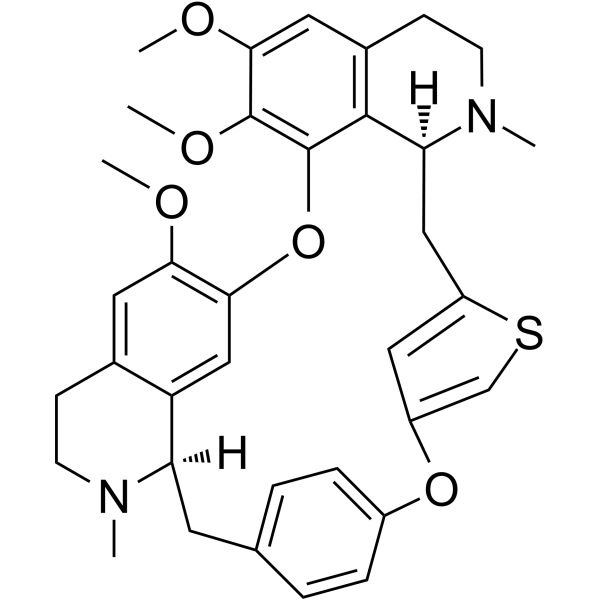
-
- HY-P1928
-
|
|
Bcl-2 Family
|
Neurological Disease
Endocrinology
|
Humanin, an anti-apoptotic peptide of 24 amino acids, is a Bax inhibitor. Humanin prevents the translocation of Bax from cytosol to mitochondria, blocks Bax from the inactive to active conformation. Humanin is a mitochondria-associated peptide with a neuroprotective effect against AD-related neurotoxicity. Humanin also improves overall insulin sensitivity in animal. Humanin are related to aging .
Humanin analogue, in which the serine at position 14 is replaced by glycine, names HNG .
|
-

-
- HY-W145695
-
|
|
Biochemical Assay Reagents
|
Inflammation/Immunology
|
|
Chitoheptaose is a chitosan oligosaccharide. Chitoheptaose is capable of extracting exoskeletons from crustaceans, such as the shells of crabs, shrimp and lobsters. Chitoheptaose has antioxidant, anti-inflammatory and anti-apoptotic activities and can be used in the study of myocarditis. Chitoheptaose has cardioprotective effects and improves cardiac parameters (left ventricular internal size, end-systolic and end-diastolic, ejection fraction and shortening fraction), inflammatory cytokines (IL-1β) in vanishing models .
|
-
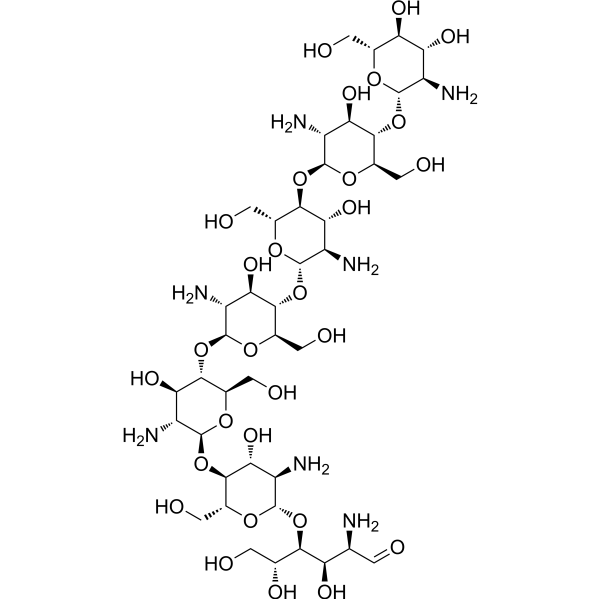
-
- HY-N0784
-
-
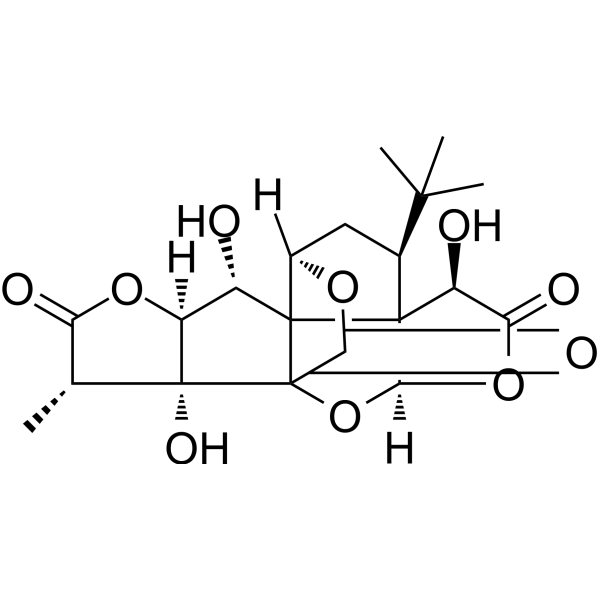
-
- HY-108635
-
|
PAF (C16)
|
p38 MAPK
MEK
ERK
Endogenous Metabolite
|
Cardiovascular Disease
Inflammation/Immunology
|
|
C16-PAF (PAF (C16)), a phospholipid mediator, is a platelet-activating factor and ligand for PAF G-protein-coupled receptor (PAFR). C16-PAF exhibits anti-apoptotic effect and inhibits caspase-dependent death by activating the PAFR. C16-PAF is a potent MAPK and MEK/ERK activator. C16-PAF induces increased vascular permeability .
|
-
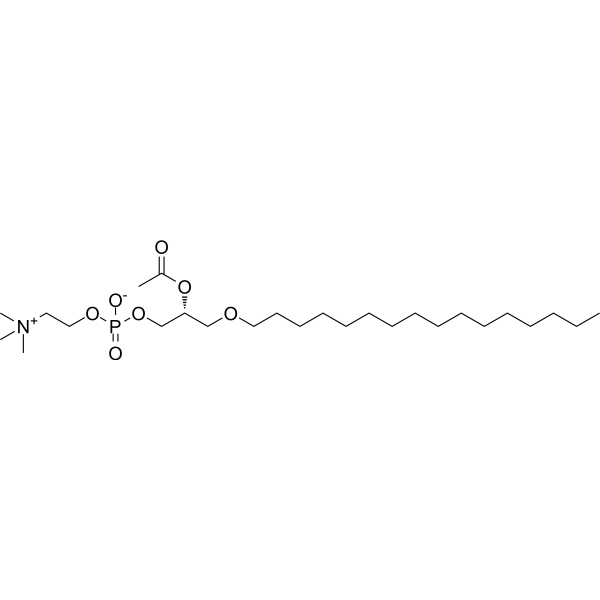
-
- HY-18628S
-
|
|
Isotope-Labeled Compounds
Bcl-2 Family
|
Cancer
|
|
UMI-77-d4 is the deuterium labeled UMI-77. UMI-77 is a selective Mcl-1 inhibitor, which shows high binding affinity to Mcl-1 (IC50=0.31 μM). UMI-77 binds to the BH3 binding groove of Mcl-1 with Ki of 490 nM, showing selectivity over other members of anti-apoptotic Bcl-2 members.
|
-
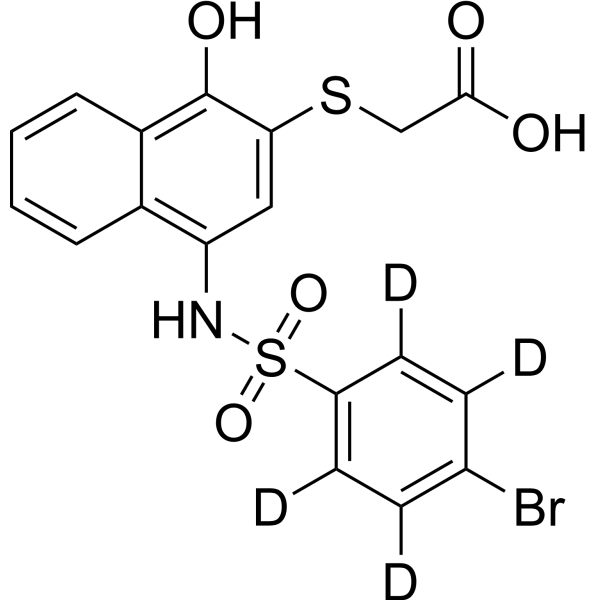
-
- HY-120553
-
|
|
Apoptosis
|
Neurological Disease
|
|
B355252, a phenoxy thiophene sulfonamide small molecule, is a potent NGF receptor agonist. B355252 potentiates NGF-induced neurite outgrowth. B355252 protects ischemic neurons from neuronal loss by attenuating DNA damage, reducing ROS production and the LDH level, and preventing neuronal apoptosis. B355252 has anti-apoptotic effects in glutamate-induced excitotoxicity, as well as in a murine hippocampal cell line (HT22) model of Parkinson disease (PD) .
|
-

-
- HY-101170
-
|
|
|
|
|
BU224 hydrochloride is a selective and high affinity imidazoline I2 receptor ligand, with a Ki of 2.1 nM. BU224 hydrochloride is sometimes used as an I2 receptor antagonist. BU224 hydrochloride exerts neuroprotective effects, with anti-inflammatory and anti-apoptotic properties. BU224 hydrochloride improves memory in 5XFAD mice, enlarging dendritic spines and reducing Aβ-induced changes in NMDARs. BU224 hydrochloride can be used for Alzheimer's disease research .
|
-
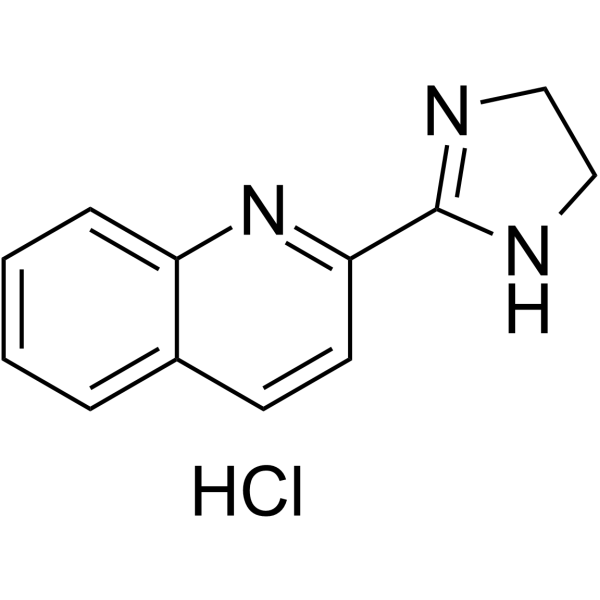
-
- HY-149540
-
|
|
Fatty Acid Synthase (FASN)
|
Cancer
|
|
CTL-06 is an inhibitor of Fatty Acid Synthase (FASN) (IC50: 3 μM) and can induce apoptosis. CTL-12 blocks the cell cycle in the Sub-G1/S phase, upregulates the expression of caspase-9 and the apoptosis marker Bax, and downregulates the anti-apoptotic marker Bcl-xL. CTL-12 inhibits de novo lipogenesis, blocks the metabolic demands of tumor cells, and is commonly used in breast and colorectal cancer research .
|
-

-
- HY-N0619A
-
|
Mulberroside D
|
TNF Receptor
Interleukin Related
Tyrosinase
|
Inflammation/Immunology
|
|
cis-Mulberroside A (Mulberroside D) is the cis-isomer of Mulberroside A. Mulberroside A is one of the main bioactive constituent in mulberry (Morus alba L.) . Mulberroside A decreases the expressions of TNF-α, IL-1β, and IL-6 and inhibits the activation of NALP3, caspase-1, and NF-κB and the phosphorylation of ERK, JNK, and p38, exhibiting anti-inflammatory and anti-apoptotic effects . Mulberroside A shows inhibitory activity against mushroom tyrosinase with an IC50 of 53.6 μM .
|
-
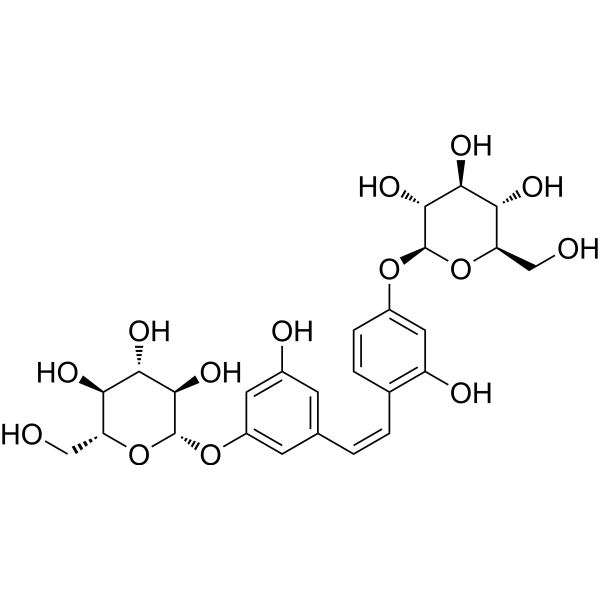
-
- HY-149541
-
|
|
Fatty Acid Synthase (FASN)
|
Cancer
|
|
CTL-12 is an inhibitor of fatty acid synthase (FASN) (IC50: 2.5 μM) and can induce apoptosis. CTL-12 blocks the cell cycle in the Sub-G1/S phase, upregulates the expression of caspase-9 and the apoptosis marker Bax, and downregulates the anti-apoptotic marker Bcl-xL. CTL-12 inhibits de novo lipogenesis, blocks the metabolic demands of tumor cells, and is commonly used in breast and colorectal cancer research .
|
-

-
- HY-N0058
-
|
Isochlorogenic acid C
|
HBV
Endogenous Metabolite
Apoptosis
Glucosidase
|
Infection
|
|
4,5-Dicaffeoylquinic acid (Isochlorogenic acid C) is an antioxidant, can be isolated from Gynura divaricata and Laggera alata. 4,5-Dicaffeoylquinic acid reduces islet cell apoptosis and improves pancreatic function in type 2 diabetic mice, and has obvious inhibitory activities against yeast α-glucosidase. 4,5-Dicaffeoylquinic acid inhibits prostate cancer cells through cell cycle arrest. 4,5-Dicaffeoylquinic acid also has anti-apoptotic, anti-injury and anti-hepatitis B virus effects .
|
-

-
- HY-N0408
-
|
|
NF-κB
Reactive Oxygen Species
Apoptosis
Influenza Virus
|
Infection
Neurological Disease
Inflammation/Immunology
Cancer
|
|
Picroside II, an iridoid compound extracted from Picrorhiza, exhibits anti-inflammatory and anti-apoptotic activities.
picroside II alleviates the inflammatory response in sepsis and enhances immune function by inhibiting the activation of NLRP3 inflammasome and NF-κB pathways .
Picroside II is an antioxidant, exhibits a significant neuroprotective effect through reducing ROS production and protects the blood-brain barrier (BBB) after cerebral ischemia-reperfusion (CI/R) injury. Picroside II has antioxidant, anti-inflammatory, immune regulatory, anti-virus and other pharmacological activities .
|
-
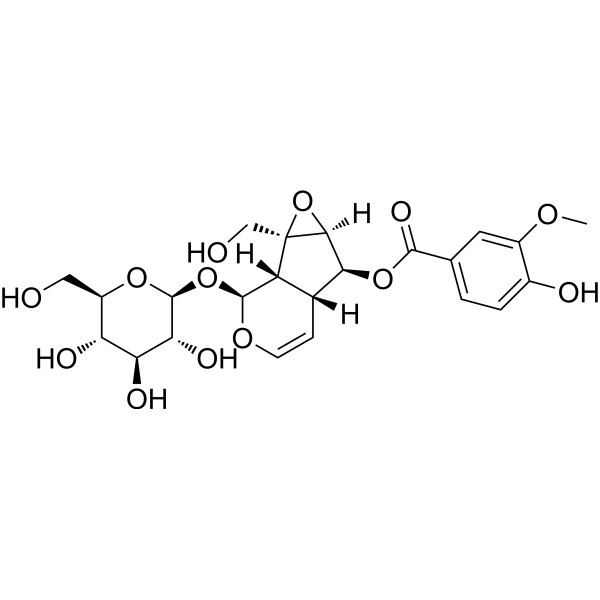
-
- HY-N1441
-
Afzelin
2 Publications Verification
Kaempferol-3-O-rhamnoside
|
|
|
|
Afzelin (Kaempferol-3-O-rhamnoside)It is a flavonol glycoside that has anti-inflammatory, anti-oxidative stress response, anti-apoptotic, and anti-cardiac cytotoxic effects. AfzelinIt can reduce mitochondrial damage, enhance mitochondrial biosynthesis, and reduce mitochondria-related proteins. Parkinand PTENinduced putative kinase 1 (putative kinase 1)s level. AfzelinCan be improved D-galactosamine(GalN)/LPSSurvival rate of mice treated with doxorubicin prophylaxis (HY-15142A)Induced cardiotoxicity and scopolamine (HY-N0296)-induced neurological injury. AfzelinAlso inhibits asthma and allergies caused by ovalbumin .
|
-

-
- HY-152226
-
|
|
HDAC
Apoptosis
|
Cancer
|
|
MC2590 is a potent pyridine-containing histone deacetylase (HDAC) inhibitor. MC2590 is a inhibitor of HDAC1-3, -6, -8, and -10 (class I/IIb-selective inhibitor) with IC50s of 0.015 μM-0.156 μM. MC2590 also inhibits HDAC isoforms HDAC4, HDAC5, HDAC7, HDAC9, HDAC11 with IC50s of 1.35 μM-3.98 μM. MC2625 induces G2/M cell cycle arrest and modulates pro- and anti-apoptotic microRNAs towards apoptosis induction .
|
-
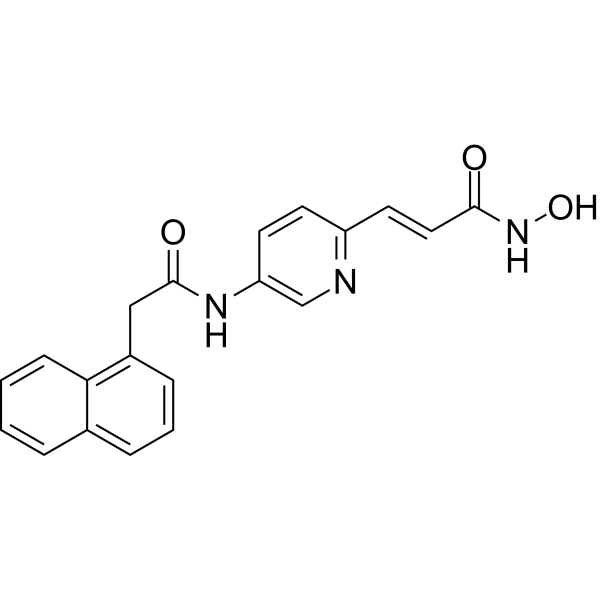
-
- HY-155613
-
|
|
Caspase
|
Cancer
|
|
M867 is a selective and reversible inhibitor of caspase-3 with an IC50 of 1.4 nM and Ki of 0.7 nM. M867 has anti apoptotic activity .
|
-

- HY-122267A
-
-
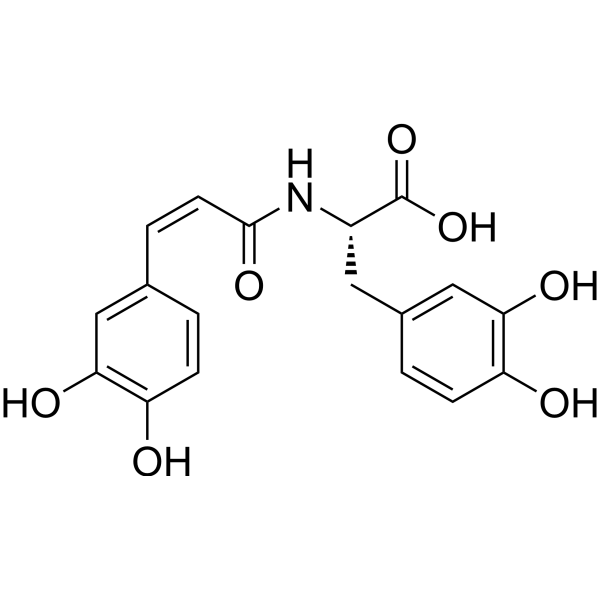
- HY-155759
-
|
|
Others
|
Inflammation/Immunology
Cancer
|
|
HMGB1-IN-2 (compound 15) is an inhibitor of highly conserved nuclear protein (HMGB1), showing NO inhibitory effect with IC50 value of 20.2 μM in RAW264.7 cells. HMGB1-IN-2 (30 μM) decreases the level of IL-1 β, TNF-α, caspase-1 p20, inhibits the phosphorylation of NF-κB p65, exhibits anti-apoptotic activity. HMGB1-IN-2 (15 mg/kg; ip) relives kidney injury in septic acute kidney injury mouse. HMGB1-IN-2 inhibits Huh7 cells and A549 cells with IC50s of 77.0 μM, and 82.0 μM, respectively .
|
-

- HY-143230
-
|
OGX-011
|
Apoptosis
|
Cancer
|
|
Custirsen is a highly specific antisense oligonucleotide that inhibits the production of clusterin , an antiapoptotic protein that is upregulated in response to chemotherapy and that confers treatment resistance.
|
-

- HY-162137
-
|
|
Apoptosis
|
Inflammation/Immunology
|
|
Hepatoprotective agent-1 (compound 1b) is a hepatoprotective agenrt. Hepatoprotective agent-1 shows anti-inflammatory, antiapoptotic and antifibrotic effects .
|
-
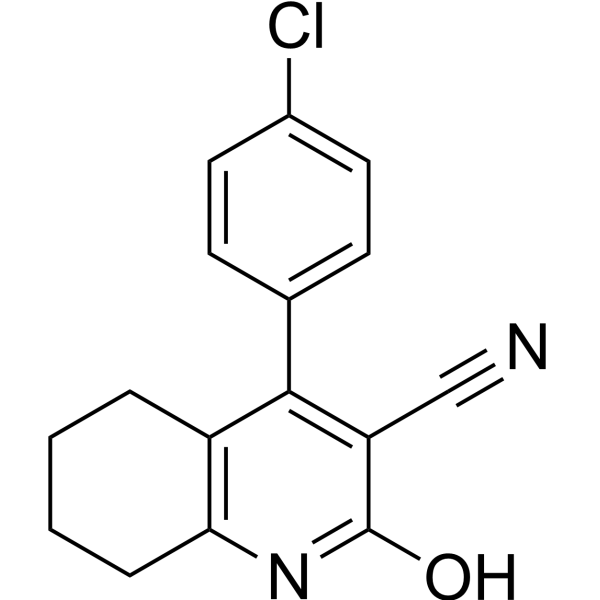
- HY-N0153
-
-
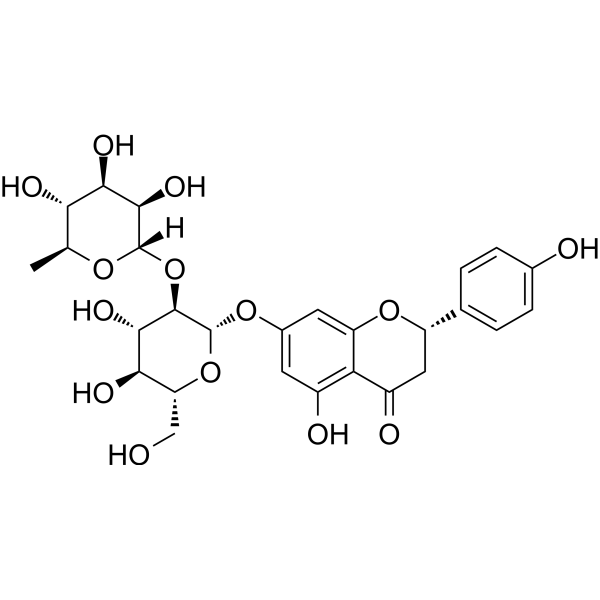
- HY-N7697D
-
-
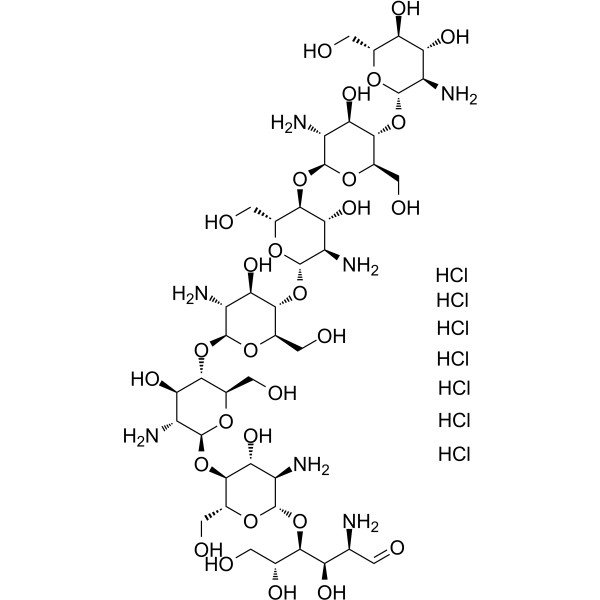
- HY-12305A
-
|
(R)-QVD-OPH; (R)-Quinoline-Val-Asp-Difluorophenoxymethylketone
|
Apoptosis
|
Cancer
|
|
(R)-Q-VD-OPh ((R)-QVD-OPH) is the less active enantiomer of Q-VD-OPha. Q-VD-OPha is an irreversible pan-caspase inhibitor with potent antiapoptotic properties.
|
-
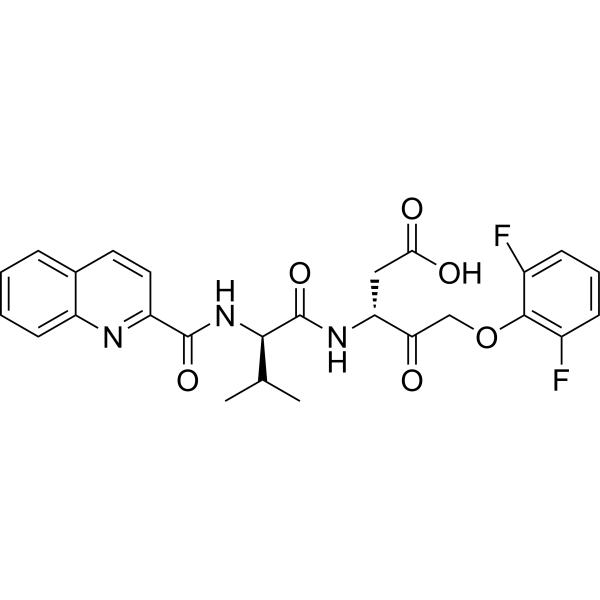
- HY-10397A
-
MX1013
2 Publications Verification
CV1013; Z-VD-FMK
|
Caspase
|
Cancer
|
|
MX1013 is a potent, irreversible dipeptide caspase inhibitor vith antiapoptotic activity. MX1013 inhibits recombinant human caspase 3 with an IC50 of 30 nM .
|
-

- HY-160006
-
|
|
Pim
|
Cancer
|
|
PIM-IN-2 (Pim-2) is a Pim kinases inhibitor (IC50 = 25 nM). PIM-IN-2 promotes cell survival, is antiapoptotic, and has exhibited an elevated level of expression in a variety of human tumors .
|
-
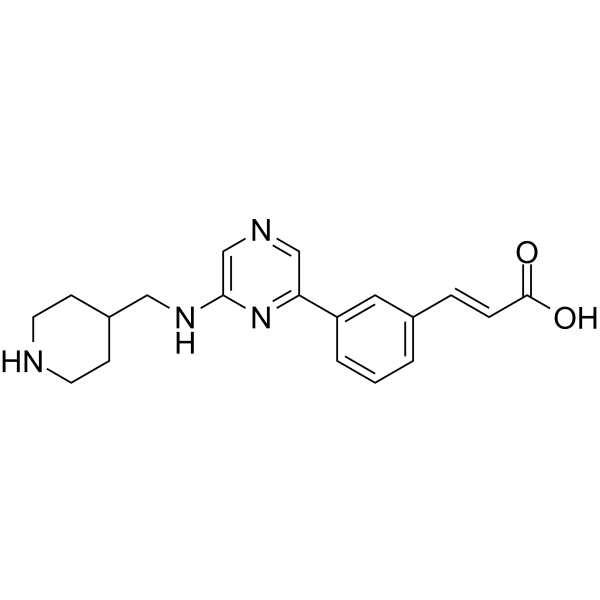
- HY-13264
-
|
WP1130
|
Deubiquitinase
Bcr-Abl
Autophagy
Apoptosis
|
Cancer
|
|
Degrasyn (WP1130) is a cell-permeable deubiquitinase (DUB) inhibitor, directly inhibiting DUB activity of USP9x, USP5, USP14, and UCH37. Degrasyn has been shown to downregulate the antiapoptotic proteins Bcr-Abl and JAK2.
|
-
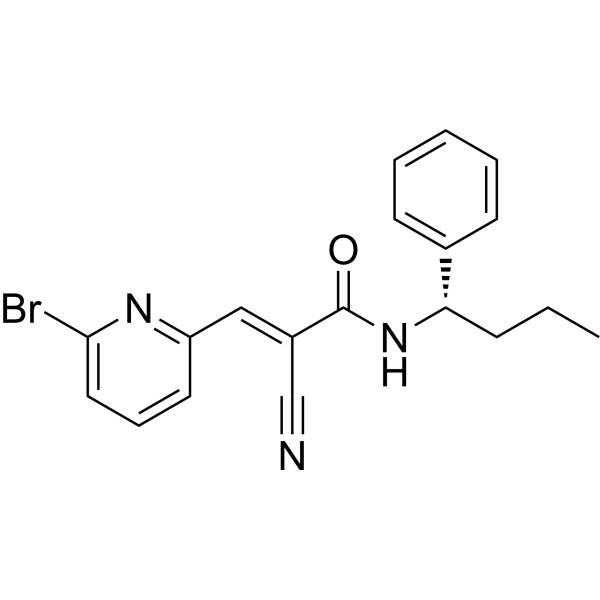
- HY-N0119
-
|
Naringin DC
|
NF-κB
|
Cancer
|
|
Naringin Dihydrochalcone is an artificial sweetener derived from naringin. Naringin is a major flavanone glycoside obtained from tomatoes, grapefruits, and many other citrus fruits. Naringin exhibits biological properties such as antioxidant, anti-inflammatory, and antiapoptotic activities. Naringin suppresses NF-κB signaling pathway.
|
-
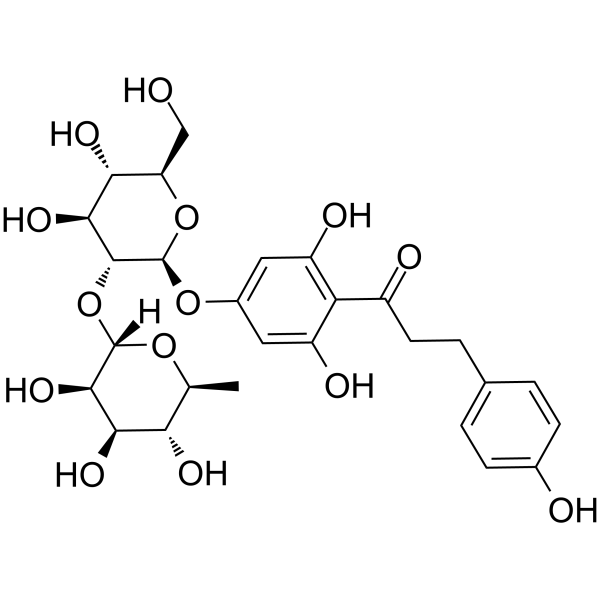
- HY-N0153R
-
|
Naringoside (Standard)
|
Endogenous Metabolite
Cytochrome P450
Mitophagy
Autophagy
|
Inflammation/Immunology
|
|
Naringin (Standard) is the analytical standard of Naringin. This product is intended for research and analytical applications. Naringin is a major flavanone glycoside obtained from tomatoes, grapefruits, and many other citrus fruits. Naringin exhibits biological properties such as antioxidant, anti-inflammatory, and antiapoptotic activities .
|
-
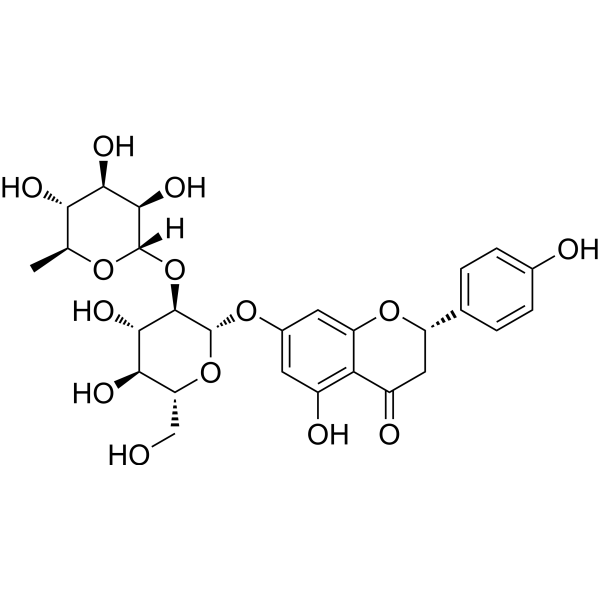
- HY-W027126
-
|
|
Apoptosis
|
Metabolic Disease
|
|
Hepatoprotective agent-2 (compound 2a), a 4-phenyl-tetrahydroquinoline derivative, displays a remarkable hepatoprotective effect. Hepatoprotective agent-2 has antiapoptotic activity. Hepatoprotective agent-2 notably prevents the chemically induced elevation of hepatic indicators associated with liver injury .
|
-
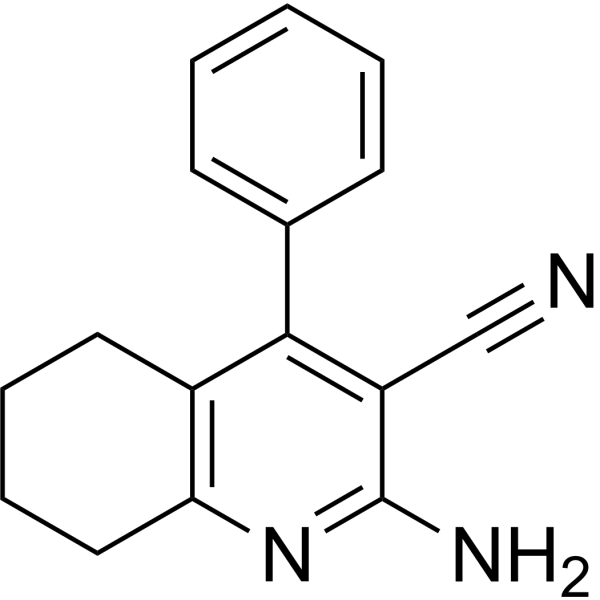
- HY-107599
-
|
|
JNK
Apoptosis
|
Neurological Disease
|
|
AEG3482 is a potent antiapoptotic compound that inhibits Jun kinase (JNK) activity through induced expression of heat shock protein 70 (HSP70). AEG3482 directly binds HSP90, thereby facilitating HSF1-dependent expression of HSP70 and HSP25 .
|
-
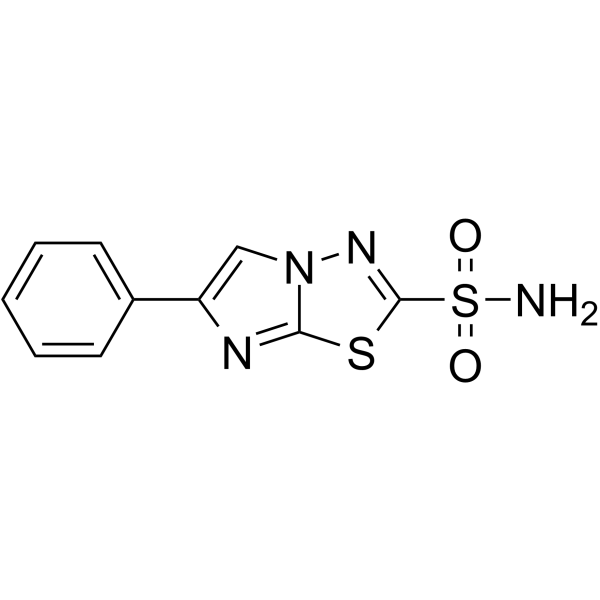
- HY-N9933
-
|
TβMCA
|
FXR
Apoptosis
|
Metabolic Disease
Cancer
|
|
Tauro-β-muricholic acid (TβMCA) is a trihydroxylated bile acid. Tauro-β-muricholic acid is a competitive and reversible FXR antagonist (IC50 = 40 μM). Tauro-β-muricholic acid has antiapoptotic effect. Tauro-β-muricholic acid inhibits bile acid-induced hepatocellular apoptosis by maintaining the mitochondrial membrane potential .
|
-
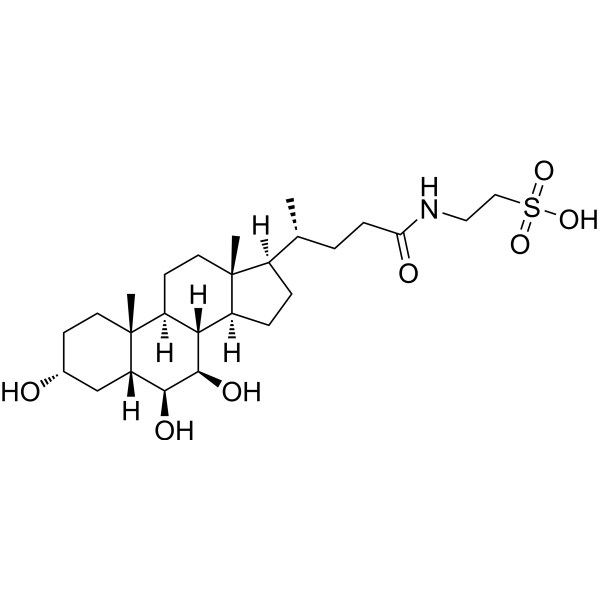
- HY-12305
-
|
QVD-OPH; Quinoline-Val-Asp-Difluorophenoxymethylketone
|
Caspase
HIV
|
Infection
Cancer
|
|
Q-VD-OPh is an irreversible pan-caspase inhibitor with potent antiapoptotic properties; inhibits caspase 7 with an IC50 of 48 nM and 25-400 nM for other caspases including caspase 1, 3, 8, 9, 10, and 12. Q-VD-OPh can inhibits HIV infection. Q-VD-OPh is able to cross the blood-brain barrier.
|
-
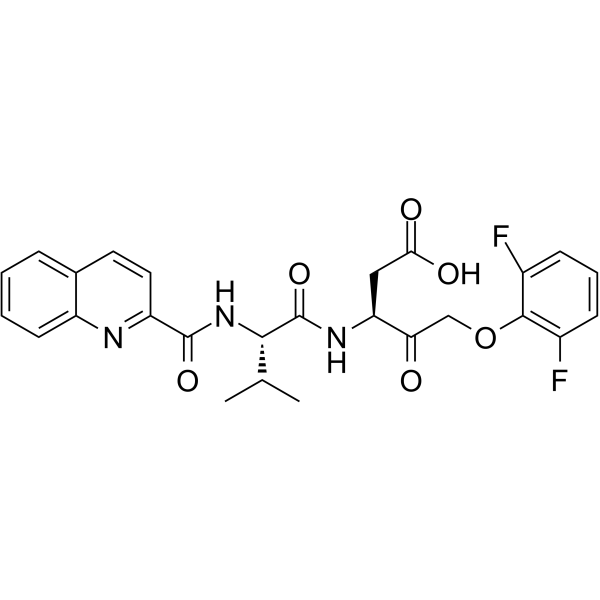
- HY-142026
-
|
(+)-Vitisin A
|
NF-κB
ERK
|
Inflammation/Immunology
|
|
Vitisin A has antioxidative, anticancer, antiapoptotic, neuroprotective and anti-inflammatory effects. Vitisin A inhibits LPS-induced NO and iNOS production via down-regulation of ERK1/2 and p38 and the NF-κB signal pathway. Vitisin A also inhibits adipocyte differentiation. Vitisin A is a resveratrol tetramer that can be isolated from Vitis vinifera roots .
|
-
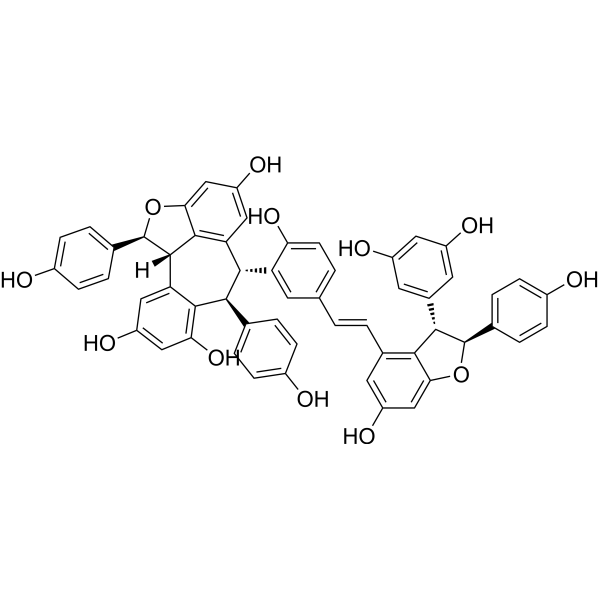
- HY-101083
-
|
|
|
|
|
BDA-366 is a potent Bcl2 antagonist (Ki = 3.3 nM), binding Bcl2-BH4 domain with high affinity and selectivity. BDA-366 induces conformational change in Bcl2 that abrogates its antiapoptotic function, converting it from a survival molecule to a cell death inducer. BDA-366 suppresses growth of lung cancer cells .
|
-
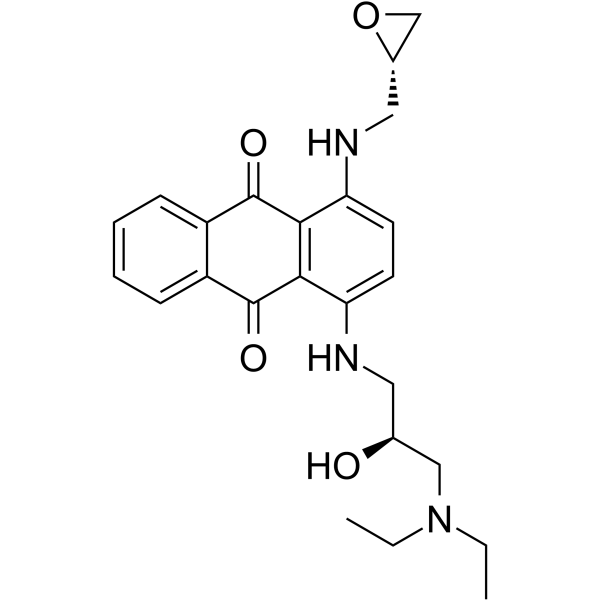
- HY-P3600
-
|
|
Apoptosis
|
Inflammation/Immunology
|
|
FIZZ-1 (32-51) (mouse) is a cysteine-rich secretory protein that is highly expressed by macrophages, bronchial epithelial and type II alveolar epithelial cells (AEC) in allergic airway inflammation. FIZZ1 (32-51) (mouse) also shows an antiapoptotic effect on lung fibroblasts. FIZZ-1 (32-51) (mouse) can be used in the study of allergic pneumonia .
|
-

- HY-N0619
-
|
|
TNF Receptor
Interleukin Related
Tyrosinase
|
Inflammation/Immunology
|
|
Mulberroside A is one of the main bioactive constituent in mulberry (Morus alba L.) . Mulberroside A decreases the expressions of TNF-α, IL-1β, and IL-6 and inhibits the activation of NALP3, caspase-1, and NF-κB and the phosphorylation of ERK, JNK, and p38, exhibiting anti-inflammatory antiapoptotic effects . Mulberroside A shows inhibitory activity against mushroom tyrosinase with an IC50 of 53.6 μM .
|
-

- HY-17473
-
Embelin
4 Publications Verification
Embelic acid; Emberine; NSC 91874
|
IAP
NF-κB
Apoptosis
Autophagy
|
Cancer
|
|
Embelin (Embelic acid), a potent, nonpeptidic XIAP inhibitor (IC50=4.1 μM), inhibits cell growth, induces apoptosis, and activates caspase-9 in prostate cancer cells with high levels of XIAP. Embelin blocks NF-kappaB signaling pathway leading to suppression of NF-kappaB-regulated antiapoptotic and metastatic gene products. Embelin also induces autophagic and apoptotic cell death in human oral squamous cell carcinoma cells .
|
-

- HY-101083A
-
|
|
Bcl-2 Family
|
Cancer
|
|
(Rac)-BDA-366 (example 2) is the despinner of BDA-366 (HY-101083). BDA-366 is a potent Bcl-2 antagonist (Ki=3.3 nM), binding Bcl-2-BH4 domain with high affinity and selectivity. BDA-366 induces conformational change in Bcl-2 that abrogates its antiapoptotic function, converting it from a survival molecule to a cell death inducer. BDA-366 suppresses growth of lung cancer cells .
|
-
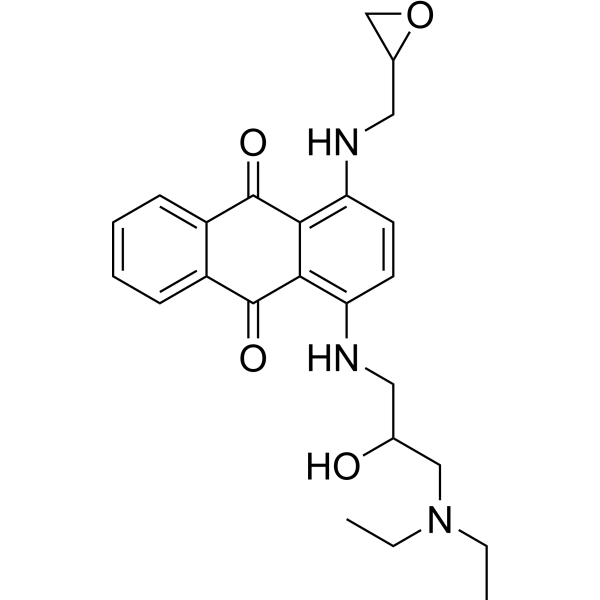
- HY-107738
-
|
Z/E-Guggulsterone
|
Apoptosis
JNK
Akt
Caspase
FXR
Autophagy
|
Cancer
|
|
Guggulsterone is a plant sterol derived from the gum resin of the tree Commiphora wightii. Guggulsterone inhibits the growth of a wide variety of tumor cells and induces apoptosis through down regulation of antiapoptotic gene products (IAP1, xIAP, Bfl-1/A1, Bcl-2, cFLIP and survivin), modulation of cell cycle proteins (cyclin D1 and c-Myc), activation of caspases and JNK, inhibition of Akt . Guggulsterone, a farnesoid X receptor (FXR) antagonist, decreases CDCA-induced FXR activation with IC50s of 17 and 15 μM for Z- and E-Guggulsterone, respectively .
|
-

- HY-122816
-
|
|
Wnt
β-catenin
Apoptosis
|
Cardiovascular Disease
Neurological Disease
Cancer
|
|
HLY78, a Lycorine (HY-N0288) derivative, is a potent activator of the Wnt/β-catenin signaling pathway. HLY78 targets the DIX domain of Axin and promotes the Axin-LRP6 (lipoprotein receptor-related protein 6) association, thus promoting LRP6 phosphorylation and Wnt signal transduction. HLY78 can be used for subarachnoid hemorrhage (SAH) research .
|
-
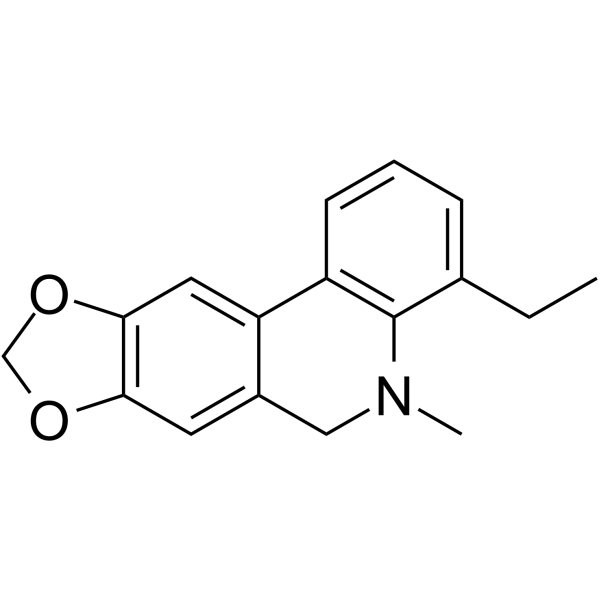
- HY-149009
-
|
|
Bcl-2 Family
Apoptosis
|
Cancer
|
|
Bcl-2-IN-9 is a novel proapoptotic Bcl-2 inhibitor with IC50 value of 2.9 μM and low cytotoxic. Bcl-2-IN-9 mediates apoptosis by down-regulating expression of Bcl-2 in cancer cells and has a high selectivity against leukemia cells .
|
-
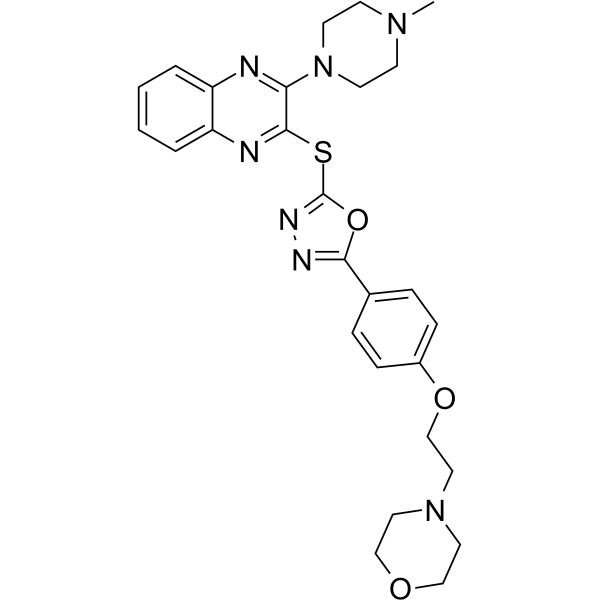
- HY-15191B
-
|
(S)-BI-97C1
|
Bcl-2 Family
|
Cancer
|
|
(S)-Sabutoclax ((S)-BI-97C1), an optically pure apogossypol derivative, is pan-active inhibitor of antiapoptotic B-cell lymphoma/leukemia-2 (Bcl-2) family proteins. (S)-Sabutoclax (Compound II) inhibits the binding of BH3 peptides to Bcl-XL, Bcl-2, Mcl-1, and Bfl-1 with IC50 values of 0.31, 0.32, 0.20, and 0.62 μM, respectively. (S)-Sabutoclax also potently inhibits cell growth of human prostate cancer, lung cancer, and lymphoma cell lines with EC50 values of 0.13, 0.56, and 0.049 μM, respectively. (S)-Sabutoclax can be used for the research of apoptosis-based therapies against cancer .
|
-

| Cat. No. |
Product Name |
Type |
-
- HY-W145695
-
|
|
Biochemical Assay Reagents
|
|
Chitoheptaose is a chitosan oligosaccharide. Chitoheptaose is capable of extracting exoskeletons from crustaceans, such as the shells of crabs, shrimp and lobsters. Chitoheptaose has antioxidant, anti-inflammatory and anti-apoptotic activities and can be used in the study of myocarditis. Chitoheptaose has cardioprotective effects and improves cardiac parameters (left ventricular internal size, end-systolic and end-diastolic, ejection fraction and shortening fraction), inflammatory cytokines (IL-1β) in vanishing models .
|
| Cat. No. |
Product Name |
Target |
Research Area |
-
- HY-P3993A
-
|
14-Glycine-Humanin (human) (acetate)
|
Apoptosis
|
Neurological Disease
|
|
(Gly14)-Humanin (human) (14-Glycine-Humanin (human)) acetate is an analog of Humanin in which the 14th amino acid serine was replaced with glycine (Gly). (Gly14)-Humanin (human) acetate has anti-apoptotic and neuroprotective functions .
|
-
- HY-P2343
-
|
|
Apoptosis
|
Cancer
|
|
BH3 hydrochloride, a BBB penetrated peptide, provoke apoptosis either by direct activation of pro-apoptotic Bax/Bak or by neutralizing anti-apoptotic Bcl-2 proteins (Bcl-2, Bcl-XL, Bcl-w, Mcl-1 and A-1) via their BH3 domian .
|
-
- HY-P1928
-
|
|
Bcl-2 Family
|
Neurological Disease
Endocrinology
|
Humanin, an anti-apoptotic peptide of 24 amino acids, is a Bax inhibitor. Humanin prevents the translocation of Bax from cytosol to mitochondria, blocks Bax from the inactive to active conformation. Humanin is a mitochondria-associated peptide with a neuroprotective effect against AD-related neurotoxicity. Humanin also improves overall insulin sensitivity in animal. Humanin are related to aging .
Humanin analogue, in which the serine at position 14 is replaced by glycine, names HNG .
|
-
- HY-P3993
-
|
14-Glycine-Humanin (human)
|
Apoptosis
|
Neurological Disease
|
|
(Gly14)-Humanin (human) (14-Glycine-Humanin (human)) is an analog of Humanin in which the 14th amino acid serine was replaced with glycine (Gly). (Gly14)-Humanin (human) has anti-apoptotic and neuroprotective functions .
|
-
- HY-P3600
-
|
|
Apoptosis
|
Inflammation/Immunology
|
|
FIZZ-1 (32-51) (mouse) is a cysteine-rich secretory protein that is highly expressed by macrophages, bronchial epithelial and type II alveolar epithelial cells (AEC) in allergic airway inflammation. FIZZ1 (32-51) (mouse) also shows an antiapoptotic effect on lung fibroblasts. FIZZ-1 (32-51) (mouse) can be used in the study of allergic pneumonia .
|
| Cat. No. |
Product Name |
Category |
Target |
Chemical Structure |
-
- HY-N6076
-
-

-
- HY-N4005
-
-

-
- HY-N1778
-
-

-
- HY-N1778A
-
-

-
- HY-N6959
-
-

-
- HY-N0783
-
-

-
- HY-N3204
-
-

-
- HY-N0403
-
-

-
- HY-N6850
-
-

-
- HY-N6077
-
-

-
- HY-N0783R
-
-

-
- HY-N2638
-
-

-
- HY-N6967
-
|
(-)-α-Bisabolol
|
Structural Classification
other families
Terpenoids
Sesquiterpenes
Source classification
Plants
|
Apoptosis
|
|
Levomenol ((-)-α-Bisabolol), a monocyclic sesquiterpene alcohol, exerts antioxidant, anti-inflammatory, and anti-apoptotic activities. Levomenol also has neuroprotective effects and prevents neuronal damage and memory deficits through reduction of proinflammatory markers induced by permanent focal cerebral ischemia in mice. Levomenol attenuates nociceptive behaviour and central sensitisation in a rodent model of trigeminal neuropathic pain. Orally active .
|
-

-
- HY-N0784
-
-

-
- HY-108635
-
-

-
- HY-N0619A
-
-

-
- HY-N0058
-
-

-
- HY-N0408
-
-

-
- HY-122267A
-
-

-
- HY-N0153
-
-

-
- HY-N7697D
-
-

-
- HY-N0119
-
-

-
- HY-N0153R
-
-

-
- HY-N9933
-
-

-
- HY-142026
-
-

-
- HY-N0619
-
-

-
- HY-17473
-
-

-
- HY-107738
-
|
Z/E-Guggulsterone
|
Triterpenes
Structural Classification
Classification of Application Fields
Terpenoids
Plants
Burseraceae
Disease Research Fields
Commiphora wightii
Cancer
|
Apoptosis
JNK
Akt
Caspase
FXR
Autophagy
|
|
Guggulsterone is a plant sterol derived from the gum resin of the tree Commiphora wightii. Guggulsterone inhibits the growth of a wide variety of tumor cells and induces apoptosis through down regulation of antiapoptotic gene products (IAP1, xIAP, Bfl-1/A1, Bcl-2, cFLIP and survivin), modulation of cell cycle proteins (cyclin D1 and c-Myc), activation of caspases and JNK, inhibition of Akt . Guggulsterone, a farnesoid X receptor (FXR) antagonist, decreases CDCA-induced FXR activation with IC50s of 17 and 15 μM for Z- and E-Guggulsterone, respectively .
|
-

| Cat. No. |
Compare |
Product Name |
Species |
Source |
Compare Products
|
| Products |
|
| Cat. No. |
|
| Species |
|
| Source |
|
| Tag |
|
| Accession |
|
| Gene ID |
|
| Molecular Weight |
|
| Purity |
|
| Endotoxin Level |
|
| Biological Activity |
|
| Appearance |
|
| Formulation |
|
| Storage & Stability |
|
| Shipping |
|
| Free Sample |
Yes
No
|
| Size |
* This product has been "discontinued".
Optimized version of product available:
|
| Cat. No. |
Product Name |
Chemical Structure |
-
- HY-10087S
-
|
|
|
Navitoclax-d8 is the deuterium labeled Navitoclax. Navitoclax (ABT-263) is a potent and orally active Bcl-2 family protein inhibitor that binds to multiple anti-apoptotic Bcl-2 family proteins, such as Bcl-xL, Bcl-2 and Bcl-w, with a Ki of less than 1 nM[1].
|
-

-
- HY-18628S
-
|
|
|
UMI-77-d4 is the deuterium labeled UMI-77. UMI-77 is a selective Mcl-1 inhibitor, which shows high binding affinity to Mcl-1 (IC50=0.31 μM). UMI-77 binds to the BH3 binding groove of Mcl-1 with Ki of 490 nM, showing selectivity over other members of anti-apoptotic Bcl-2 members.
|
-

Your information is safe with us. * Required Fields.
Inquiry Information
- Product Name:
- Cat. No.:
- Quantity:
- MCE Japan Authorized Agent:




















































































